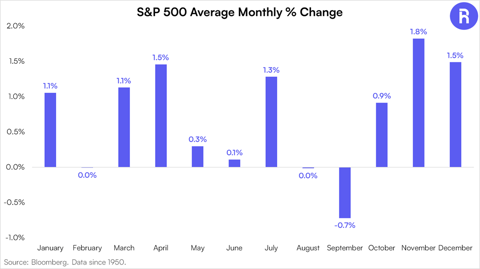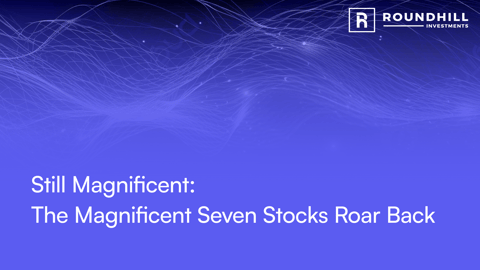State of the State of Small Caps
Small Caps Haven’t Made a High Since…
Small caps have been difficult for investors in recent years, challenging the conventional wisdom that small caps are beneficial to include in “buy-and-hold” portfolios. It has been over 700 trading days since the Russell 2000 last reached an all-time high. This is the 3rd longest streak in history, only trailing behind the drawdowns from the 2000 dot-com bubble and the Great Financial Crisis. The lack of upside momentum and the consequential opportunity cost has led a great deal of market participants to become disinterested in the small cap corner of the market.

Gradually, Then Suddenly
Ambivalence towards small cap stocks persisted until mid-July. Following July’s softer-than expected CPI reading, the likelihood of the Federal Reserve cutting interest rates in September improved drastically. The Russell 2000 went vertical, with over 50% of small caps reaching a 1-month high for five consecutive trading days.
Despite short-term mean reversion risk, history shows that momentum tends to beget momentum. The Russell 2000 tends to fall 3.2% over the next month and rise 1.7% over the next three months, both below historical average. However, the forward returns for small caps outperform historical rates of return over the next 6 months (+5.3% vs. +4.5%) and 12-months (+17.6% vs. +8.7%). So, if history is any guide, the risk/reward profile for small caps is improving.

The Technical Backdrop
Despite the Russell 2000’s impressive momentum in July, there is room for improvement. After an initial pop with the 20-day high surge, the percentage of the Russell 2000 stocks trading above their respective 200-day average is under 60%. While only a single datapoint, the trend backdrop for small caps can be labeled as mixed at best.

Perhaps unsurprisingly, with a mixed trend backdrop and prone to mean reversion after powerful price momentum, small caps may be in need of a breather. The Russell 2000 has struggled to durably outperform large cap peers in the S&P 500, with fits and starts of various magnitudes. Do small caps have any fundamental tailwinds?

The Fundamental Breakdown
July’s momentum episode for small caps has not seen much fundamental endorsement. The popular argument for the surge in the Russell 2000 was the fundamental benefit that came with the Fed lowering interest rates. Despite the premise of a friendlier operating environment for the small companies in the U.S. economy, annual earnings estimates for 2024 and 2025 have continued moving lower.

This has led to multiple expansion for the Russell 2000, both on an absolute and relative basis. Historically, the Russell 2000 has traded at a premium to the S&P 500, a byproduct of the lower earnings backdrop in small caps. While it's hard to argue that small caps are cheap on a relative basis, their relative price/earnings ratio compared to the past decade is worth noting considering its discount to its historical average.

The Debt and Interest Rate Debate
Given the size of the companies, the Russell 2000 can be subject to interest rate risk and headwinds related to their financial leverage. More cyclically sensitive and levered to economic fluctuations, small cap companies have smaller balance sheets and less flexibility with taking on debt. For now, it appears that leverage will continue to be a headwind for small caps, with next-twelve month estimates for net debt accelerating higher. The Fed on the cusp of starting a rate cut cycle could provide some relief in the context of interest costs, but the positive impact could be offset.

Small Businesses in the Economy
The National Federation of Independent Business surveys roughly 800 small business members throughout the economy every month. One of the questions asked is “what is your single most important problem?” For August 2024, inflation continues to be cited by the majority as the most important problem, followed by quality of labor and taxes. Interestingly, financial and interest rates ranked last among companies surveyed. With inflation supposedly retreating and the Fed preparing to cut interest rates in September, time will tell if small business concerns shift elsewhere.

The Volatility Profile of Small Caps
Similar to any asset in global markets, U.S. small caps carry their own unique risk/reward profile. Their naturally riskier backdrop is associated not only with the potential for higher returns, but also higher volatility. Looking back to 2010, it can be seen that the Russell 2000 has a higher volatility baseline compared to the S&P 500 and the Nasdaq 100. While volatility is not a bad thing, it is important to be actively managed. The current market regime has not been rewarding for small cap “buy-and-hold” investors as the wait for the next all-time high continues, but it’s clear that small caps are prone to episodic bouts of outperformance versus the broader market.

Taken together, investors should not write off the impressive momentum surge seen in July. While prone to mean reversion in the short-term, the forward returns improve the risk/reward backdrop. Valuations are not compelling enough given the lack of fundamental improvement. Meanwhile, the lack of upward earnings revisions isn’t encouraging, and helps contribute to the murky fundamental situation small caps are in. Given the higher volatility profile of small caps, the ensuing uncertainty from a contentious election cycle, and the Fed seemingly poised to cut rates, a more dynamic approach to small caps could be a prudent move.

Not an offer: This document does not constitute advice or a recommendation or offer to sell or a solicitation to deal in any security or financial product. It is provided for information purposes only and on the understanding that the recipient has sufficient knowledge and experience to be able to understand and make their own evaluation of the proposals and services described herein, any risks associated therewith and any related legal, tax, accounting or other material considerations. To the extent that the reader has any questions regarding the applicability of any specific issue discussed above to their specific portfolio or situation, prospective investors are encouraged to contact 1-855-561-5728 or consult with the professional advisor of their choosing.
Forward-looking statements: Certain information contained herein constitutes “forward-looking statements,” which can be identified by the use of forward-looking terminology such as “may,” “will,” “should,” “expect,” “anticipate,” “project,” “estimate,” “intend,” “continue,” or “believe,” or the negatives thereof or other variations thereon or comparable terminology. Due to various risks and uncertainties, actual events, results or actual performance may differ materially from those reflected or contemplated in such forward-looking statements. Nothing contained herein may be relied upon as a guarantee, promise, assurance or a representation as to the future.
Use of Third-party Information: Certain information contained herein has been obtained from third party sources and such information has not been independently verified by Roundhill Financial Inc. No representation, warranty, or undertaking, expressed or implied, is given to the accuracy or completeness of such information by Roundhill Financial Inc. or any other person. While such sources are believed to be reliable, Roundhill Financial Inc. does not assume any responsibility for the accuracy or completeness of such information. Roundhill Financial Inc. does not undertake any obligation to update the information contained herein as of any future date.
Any indices and other financial benchmarks shown are provided for illustrative purposes only. Investors cannot invest directly in an index. Comparisons to indexes have limitations because indexes have volatility and other material characteristics that may differ from a particular hedge fund. For example, a hedge fund may typically hold substantially fewer securities than are contained in an index.
Except where otherwise indicated, the information contained in this presentation is based on matters as they exist as of the date of preparation of such material and not as of the date of distribution or any future date. Recipients should not rely on this material in making any future investment decision.




